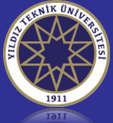| Hafta | Konular | Ön Hazırlık |
|---|
| 1 | Derse giriş | Ders izlencesi ve öğretim elemanı tanıtımı |
| 2 | Toplum çevirmenliğine giriş: tarihçe, kapsam ve araştırma eğilimleri | Alimen, N. (2018). “Toplum Çevirmenliğine Genel Bir Bakış ve Eğitime Yönelik Yöntem Arayışları.” Çeviribilimde Güncel Tartışmalardan Kavramsal Sorgulamalara içinde (s. 249–270). Vargas-Urpi, M. (2012). “State of the Art in Community Interpreting Research: Mapping the Main Research Topics.” Babel, 58(1), 50–72. |
| 3 | Mesleki roller, standartlar, etik ilkeler ve çevirmen yeterlilikleri | MYK (2018). Toplum Çevirmeni (Seviye 6) Ulusal Yeterlilik. CHIA (2017). California Standards for Healthcare Interpreters. NCIHC (2021). National Standards of Practice for Interpreters in Health Care. NAJIT (2016). Code of Ethics and Professional Responsibilities. |
| 4 | Hukuk ve sağlık alanlarında toplum çevirmenliği | Hale, S. (2005). “The Interpreter’s Role.” In The Discourse of Court Interpreting (pp. 11–34). John Benjamins. Benmaman, V. (1997). “Legal Interpreting by Any Other Name is Still Legal Interpreting.” In The Critical Link (pp. 179–190). John Benjamins. Iacono, K. (2022). “Interpreting in Quality-Centred Medical Tourism in Austria and Germany.” Trans-kom, 15(1), 128–141. |
| 5 | Eğitim ve sosyal hizmet bağlamlarında toplum çevirmenliği | Smith, M. B. (2015). “Interpreting in Education.” In The Routledge Handbook of Interpreting (pp. 265–279). Routledge. Tipton, R., & Furmanek, O. (2016). “Social Care Interpreting.” In Dialogue Interpreting (pp. 174–203). Routledge. |
| 6 | Kurumsal söylemde çevirmenin konumlanışı ve güç ilişkileri | Wadensjö, C. (1998). Interpreting as Interaction. London: Longman. (seçili bölümler) Mason, I. (2005). “Communicating and Mitigating Power in Interpreted Medical Consultations.” Text & Talk, 25(5–6), 751–768. |
| 7 | Sözlü çeviri etkileşimlerinde dönüşümlü konuşma (turn-taking) yapıları | Sacks, H., Schegloff, E. A., & Jefferson, G. (1974). “A Simplest Systematics for the Organization of Turn-Taking.” Language, 50(4), 696–735. Heritage, J. (1984). Garfinkel and Ethnomethodology. Polity Press. (seçili sayfalar) |
| 8 | Ara Sınav 1 | |
| 9 | Dönüşümlü konuşmanın analizine yönelik yöntemler | Heritage, J. (1995). “Conversation Analysis: Methodological Aspects.” In Aspects of Oral Communication (pp. 391–418). Mason, I. (2006). “On Mutual Accessibility of Contextual Assumptions.” Journal of Pragmatics, 38(3), 359–373. |
| 10 | Kültürel aracılık ve etik karar verme süreçleri | Inghilleri, M. (2003). “Habitus, Field and Discourse.” Target, 15(2), 243–268. Angelelli, C. V. (2004). Medical Interpreting and Cross-Cultural Communication. Cambridge University Press. (seçili bölümler) |
| 11 | Tarafsızlık, müdahale ve dayanışma tartışmaları | Tipton, R. (2011). “Relationships of Learning Between Military Personnel and Interpreters.” Interpreter and Translator Trainer, 5(1), 15–40. Baraldi, C., & Gavioli, L. (2012). “Coordination in Interpreter-Mediated Interaction.” Interpreting, 14(2), 235–257. |
| 12 | Ara Sınav 2 | |
| 13 | Mesleki normlar ve kurumsal beklentiler | Pöchhacker, F. (2008). “Interpreting as a Profession.” In The Routledge Companion to Translation Studies (pp. 133–145). Routledge. Valero-Garcés, C. (2005). “Quality in Public Service Interpreting.” Interpreting, 7(2), 187–210. |
| 14 | Otantik veri analizi: görüşme dökümleri ve vaka çözümlemeleri | Wadensjö, C. (1998). Interpreting as Interaction. (devam) Davidson, B. (2002). “The Interpreter as Institutional Gatekeeper.” Journal of Sociolinguistics, 6(3), 379–405. |
| 15 | Genel değerlendirme ve kapanış | Önceki haftaların okuma ve ders notları üzerinden genel tekrar |
| 16 | Final | |



